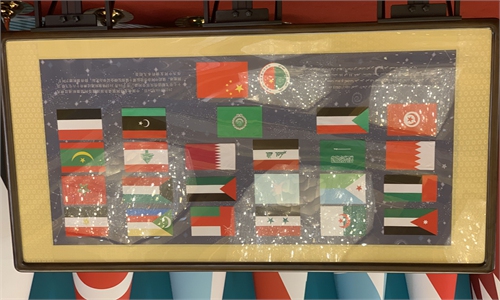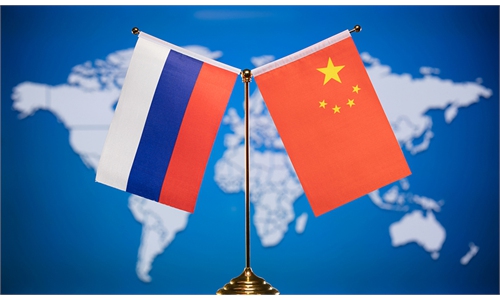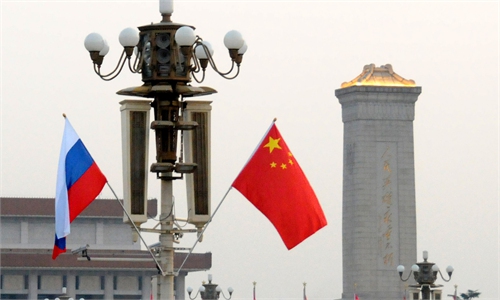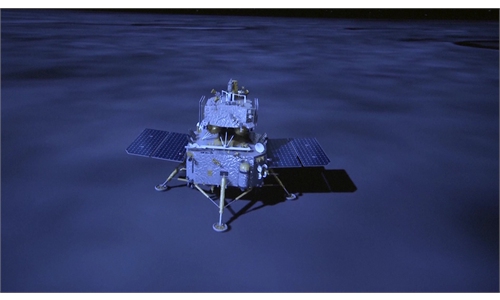Video: https://x.com/i/status/1797082273982132735
HISTORY MADE: Chang’e-6 lands on far side of the moon to collect unique ... https://youtu.be/r0YqKP-Eyhs?si=H8VQRIgeH1XLVB4K via @YouTube
This image taken from video animation at Beijing Aerospace Control Center on June 2, 2024 shows the lander-ascender combination of Chang'e 6 probe touches down on the far side of the moon. Photo: VCGChina has successfully landed its second spacecraft - the Chang'e-6 unmanned probe - on the Moon's far side on Sunday, when no other country has done it once. The feat marks a key milestone in achieving its mission to bring home, for the first time in human history, samples from an unexplored region from Earth's natural satellite, as stargazers around the world hold their breaths for this epic moment.
Sunday's historic moment was also hailed by Western media. Chinese experts said while the US is setting unrealistic, grand goals but giving it a tight schedule in order to outpace China, China is steadily moving forward step by step, achieving concrete and rich results.
The lander-ascender combination of the Chang'e-6 probe, after traveling in orbit for some 30 days since its May 3 launch, touched down at the designated landing area at 6:23 am (Beijing Time) in the South Pole-Aitken (SPA) Basin, the China National Space Administration (CNSA) announced.
The powered descent began at 6:09 am. The main engine with variable thrust was ignited, and the combination quickly adjusted its attitude and gradually approached the lunar surface.
Soft landing on the Moon has always been a key hurdle for countries around the world in their lunar explorations. Last August, India became the fourth country following the US, the former Soviet Union and China to conquer the feat with its Chandrayaan-3 probe, after its first such attempt failed in 2019.
Japan also made it to the Moon in January this year, but its SLIM lander overturned during the process of landing, arriving upside-down on the lunar surface which put the solar panels in shadow and soon resulting in battery shortage for the lander.
Landing on the far side of the Moon is even more challenging, or as some have described it, the moment where the chance of failure is the highest. This is because the far side is always facing away from the Earth and is marked by numerous deep and shadowy craters, making it difficult to have direct communications and posing high demand for robotic landing operations, experts said.
"It's just like landing a small truck in the midst of towering mountains and ridges, where every step must be taken seriously," Xinhua News Agency said in a report on Sunday.
Wang Ya'nan, chief editor of Beijing-based Aerospace Knowledge magazine, told the Global Times that the smooth soft landing signaled China's competent lunar landing techniques, with the Queqiao-2 relay satellite providing sufficient communication efficiency and transmission rates, managing to bridge the communication link when ground control cannot directly observe the status of the lunar rover.
Despite having communication relays on the far side, however, the transmission signals still had time delays, which required the Chang'e-6 probe adjusting its position and making obstacle avoidances all by itself. Such real-time responses need a highly intelligent and automated system, Wang said.
Within 48 hours after landing, a robotic arm will be extended to scoop rocks and soil from the lunar surface, and a drill will bore into the ground.
Due to the moon's obstruction, the Earth-moon communication window period on the far side of the moon, even with the help of the Queqiao-2 relay satellite service, is still shorter than that on the near side. Therefore, the sampling time of Chang'e-6 will be reduced to only 14 hours, compared with the 22 hours used by its predecessor Chang'e-5, Xinhua News Agency reported.
Steady progress
The historic moment made by the Chang'e-6 mission has made headlines in multiple mainstream Western media outlets.
The AP said the Chnag'e-6 could provide insights into differences between the less-explored region and the better-known near side.
The AP described the moon program as "part of a growing rivalry with the US - still the leader in space exploration - and others."
Reuters, on Sunday, also reported that "the landing elevates China's space power status in a global rush to the moon," where countries including the US are hoping to exploit lunar minerals to sustain long-term astronaut missions and moon bases within the next decade.
The US also has its own ambitious moon program called the Artemis. The program envisions a crewed moon landing by late 2026, relying heavily on private companies. However, the program has met several major delays that put a question mark on whether it could meet its grand goals.
Following a successful uncrewed test flight in late 2022, NASA had planned to launch a crewed lunar flyby mission called Artemis II in November 2024. In a press briefing in January, NASA officials revealed that the mission would be delayed until September 2025. Artemis III - the program's first crewed lunar landing - has slipped as well, pushed back to September 2026, according to publications.
The US' moon program is featured by is its grandiose goals, Wang said. The expert took an example of the Gateway Space Station around the moon by NASA and using it as a base for manned lunar exploration, "possibly even venturing into deeper space from this point."
However, it seems contradictory that while pursuing such grandiose goals, the US has set a tight schedule for its technical research and development, as the US government is determined to "being faster than China," Wang noted.
The expert further noted that while the US' manned lunar landing aims to make a revolutionary leap from the Apollo program decades ago, it set an ambitious deadline around 2026, which will inevitably pose significant technical risks, highlighting the uncertainty in the current US lunar exploration efforts.
In contrast, China's lunar exploration project has been built step by step, relying on the footsteps of previous missions. It would be a natural outcome if China could land its taikonauts on the moon by 2030, Wang believes.
Wang noted that China is steadily moving forward, leaving clear footprints and achieving fruitful results. "If Chang'e-6 successfully returns with samples from the moon's far side, these samples will provide key information for understanding the moon's origins, geological changes, and even some information about the early formation of the universe."
With China's continuous success in deep space exploration, the prospects for international cooperation are expanding, observers said. China's high success rate in deep space exploration, particularly lunar missions, demonstrates its reliability and safety in operating unmanned spacecraft, making it an ideal partner for collaboration.
In the current era of increased geopolitical tensions, the Chang'e 6 mission is "a rare example of constructive international collaboration," Richard de Grijs, Professor of Astrophysics, Macquarie University in Australia was quoted as saying in The Conversation.
The Chang'e-6 mission has brought up four international payloads to the Moon, including the European Space Agency's lunar surface ion composition analyzer, France's radon detection instrument, Italy's laser corner reflector, and a CubeSat from Pakistan, the CNSA revealed to the Global Times. Now the payloads will begin conducting scientific research as planned, the administration said.












